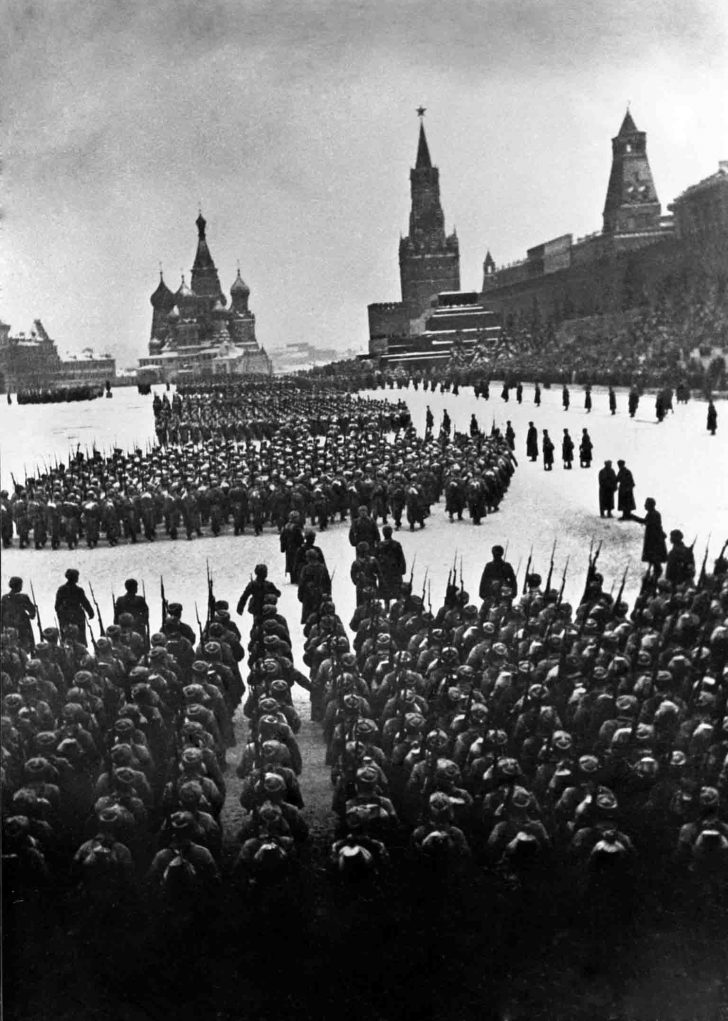Lasting Impacts
The Russian Revolution created the first communist state in the world, and even though western countries saw this new communist state as a threat, later on, many countries converted to this new ideology. People from countries who were looking to convert traveled to Moscow to scope out this new idea. Many came back disappointed, but they believed that their country was different and that they could do it better.
"The idea of Communism was encouraged by the existence of the Soviet Union."
- Mark D. Steinberg, Emeritus Professor of Russian History

Soviet parade, 1941, wikipedia.org
In China, directly after the revolution, the beginning of a communist uprising began. It took many years to plan and succeed, but eventually in 1949 the revolution came to fruition and China became a major communist power. China remains communist even today. Many other countries adopted the ideology, notably Cuba and Vietnam.

Chinese revolutionaries marching and parading, 1949, wikipedia.org
"Even in the 60's, when people knew the limitations of the Soviet Government, there's still this upsurge of left-wing radicalism in Europe, the United States, Latin America, and India."
- Mark D. Steinberg, Emeritus Professor of Russian History
Of course, after WWII, the rivalry between communism and capitalism fully riled up and the Cold War ensued. The war was the product of incredible tensions between the U.S. and the USSR, and both ideologies competed for superiority. It was a major political staple of the second half of the 20th century, leading to many intense confrontations, and entangling many other countries in the conflict. The Cold War cooled down as it continued and finally ended when the Soviet Union fell after 68 years of existence in 1991.